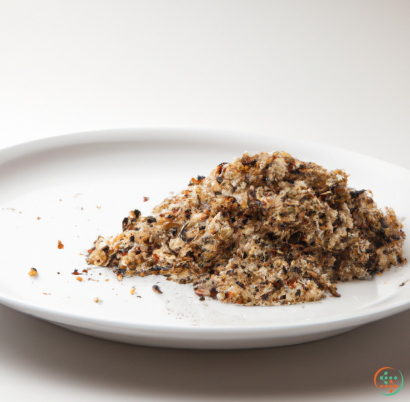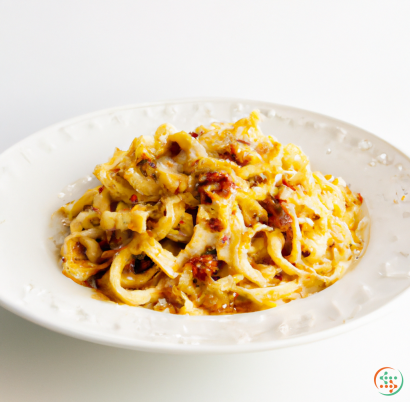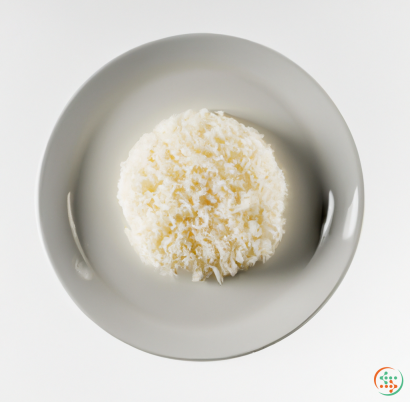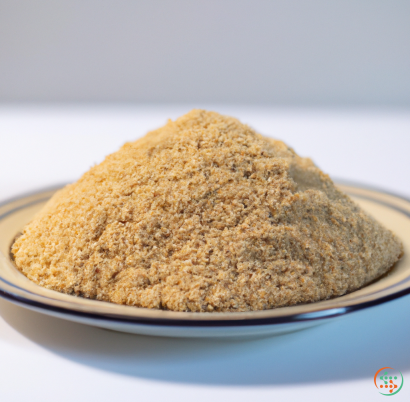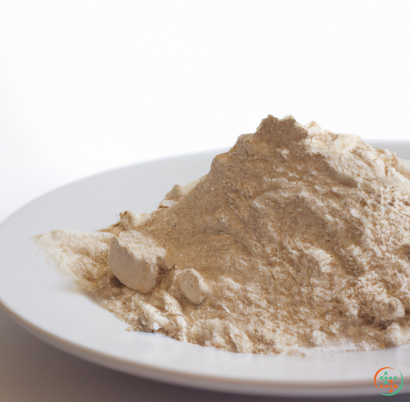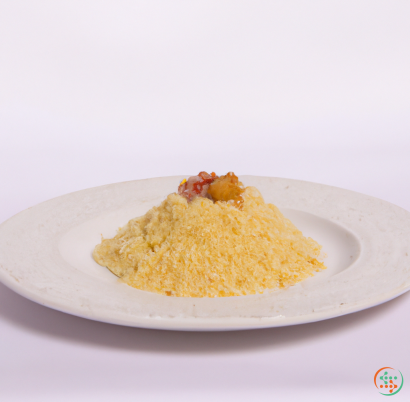Soba
When people talk about Japanese cuisine, they often think of sushi, ramen, and tempura. But there’s another type of dish that is becoming more and more popular in the West: soba.
Soba is a traditional Japanese dish made with buckwheat noodles, either served hot or cold with a variety of accompaniments and sauces. The popularity of soba has been increasing in recent years, due to its versatility and easy preparation.
First, let’s look at what soba is. Buckwheat, or soba in Japanese, is a hardy grain that is related to wheat but is not actually a grain, as it does not contain gluten. Soba is extremely popular in Japan and has been for centuries; from a simple meal that was traditionally served to farmers who needed a nourishing meal, all the way to a luxurious dining experience with delicate noodles and flavor pairings.
Soba is usually served as a meal, either alone or with accompaniments and sauces. You can find soba with teriyaki, tempura, or even a dipping sauce of your choice. Generally, for a hot-pot style dish, you have to add dashi broth and the soba will be cooked in them. Different herbs, vegetables and other ingredients may also be added in to the dish.
When eating cold soba, it is best to rinse the noodles in cold water and then served with a dipping sauce. The most popular dipping sauce is made of a mix of soba tsuyu (a sauce based on shoyu, sugar, mirin and sake) and soy sauce. Cold soba can also be eaten with other accompaniments — such as seaweed, chopped scallions, wasabi and grated ginger.
The quality of any soba dish is dependent on the quality of its ingredients and its preparation methods. True aficionados of soba select their ingredients very carefully, carefully noting the quality of the buckwheat and the other ingredients that make up the dish.
Soba is a great source of valuable vitamins, minerals and fiber and is low in calories. It also contains copious amounts of the antioxidant rutin and the mineral magnesium, among other nutrients. Thus, it is not only tasty, but a healthy and nutritious meal as well.
Health benefits aside, soba is a great choice for many different occasions, from a quick and easy lunch to an elegant dinner. It is perfect for people who are looking for a nutritious and low-calorie meal as well as those who just want to enjoy a unique and delicious culinary experience.
If you’re feeling adventurous, there are so many ways to customize your soba dish to suit your tastes. From cold soba salad with a peanut-butter-miso dressing to a hot-pot with a creamy mushroom sauce, the possibilities are endless. With the right combination of flavors, soba can be a delicious, nutritious, and easy-to-make meal that can be enjoyed by both novice and accomplished chefs alike.
Soba is one of the most beloved noodles in Japan and all over the world. In many places, it is seen as a symbol for good luck, prosperity, and longevity. But what is the process that goes into making a soba dish? How does soba travel from field to dinner plate? In this blog post, we’ll discuss the science and processes behind each step of the soba journey.
To begin with, let's talk about the ingredients responsible for making soba. Soba noodles are made from buckwheat, a plant that is cultivated in many regions in Japan during the summer months. Buckwheat is a gluten-free grain, however soba noodles contain wheat flour which contains gluten to give the noodles their structure during cooking. Though there are many varieties of buckwheat, according to the Japanese Ministry of Agriculture, Forestry, and Fisheries, 90% of the buckwheat used in soba production comes from Hokkaido.
Once the buckwheat is harvested, it is milled and sifted to remove any impurities. The buckwheat is then ground into a type of flour called kinako, which is the main ingredient used to make soba noodles. Kinako is combined with wheat flour, salt, and water, creating a dough that is kneaded and rolled out until it is thin enough for cutting. This thin sheet of dough is then cut into thin and even strips, which are then left to dry. The strips of dough need to be left to dry in order for the noodles to keep their shape and texture when cooked. This process can take anywhere from two to three days depending on the weather conditions and the desired texture of the noodles.
Once the soba has been dried, it is packaged and sent to stores, restaurants, and customers. Soba noodles arrive at these places already cooked and then later re-heated as needed. This is so that the noodles maintain their texture and taste throughout the distribution process.
When ready for consumption, soba noodles can be enjoyed hot or cold. They are often served in a broth called dashi made by simmering small fish, seaweed, and other ingredients. This soup, along with the noodles and some condiments like green onions, wasabi, and ginger, creates the traditional Japanese broth.
If the soba noodles are enjoyed cold, they are first boiled in a pot of salty water until they are half cooked, meaning that they are still firm when pressed against the side of the pot. This allows the noodles to maintain their chewiness and be less sticky when served. After they have been boiled, they are transferred to a pot of cool water to stop the cooking process. They are then seasoned with a dipping sauce made from mirin, soy sauce, and a few other ingredients like sugar, vinegar, and dried bonito flakes. Once the flavors have been combined and the sauce has been strained, it is transferred to a cup for dipping.
Soba noodles can also be enjoyed hot. To do this, once boiled, the noodles are put into a pot of dashi, which can be made from kombu, bonito flakes, and other mushrooms and flavorings. This soup is slowly simmered until all the ingredients are cooked through. Any remaining condiments like green onions, wasabi, and ginger can be added to the soup before it is served.
No matter if you enjoy your soba hot or cold, it travels from field to dinner plate within a matter of days. This journey is accelerated thanks to the efficient production techniques employed in Japan. From careful drying techniques to the use of specific types of buckwheat, the processes used to manufacture soba noodles ensures that this beloved dish is consistently delicious every time you try it.
| Vitamin B1 | 0.09 mg | |
| Vitamin B2 | 0.03 mg | |
| Vitamin B3 | 0.51 mg | |
| Vitamin B5 | 0.24 mg | |
| Vitamin B6 | 0.04 mg | |
| Vitamin B9 | 0.007 mg |
| Calcium | 0.004 grams |
Daily Value 1.3 g
|
| Iron | 0.48 mg |
Daily Value 0.018 g
|
| Magnesium | 0.009 grams |
Daily Value 0.4 g
|
| Phosphorus | 0.025 grams |
Daily Value 1.25 g
|
| Potassium | 0.035 grams |
Daily Value 4.7 g
|
| Sodium | 0.06 grams |
Daily Value 2.3 g
|
| Zinc | 0.12 mg |
Daily Value 0.011 g
|
| Copper | 0.01 mg |
Daily Value 0.9 mg
|
| Manganese | 0.37 mg |
Daily Value 0.0023 g
|
| Tryptophan | 0.072 grams | |
| Threonine | 0.177 grams | |
| Isoleucine | 0.195 grams | |
| Leucine | 0.33 grams | |
| Lysine | 0.214 grams | |
| Methionine | 0.072 grams | |
| Cystine | 0.094 grams | |
| Phenylalanine | 0.217 grams | |
| Tyrosine | 0.105 grams | |
| Valine | 0.249 grams | |
| Arginine | 0.317 grams | |
| Histidine | 0.119 grams | |
| Alanine | 0.248 grams | |
| Aspartic Acid | 0.372 grams | |
| Glutamic Acid | 1.096 grams | |
| Glycine | 0.332 grams | |
| Proline | 0.306 grams | |
| Serine | 0.26 grams |
| Total Sugars | 0.131141 grams |
per 100g
|
| Palmitic acid (16:0) | 0.01 grams |
|
| Total Saturated fatty acids: | 0.01 g | |
| Oleic acid (18:1) | 0.03 grams |
|
| Total Monounsaturated fatty acids: | 0.03 g | |
| Linoleic acid (18:2) | 0.03 grams |
|
| Total Polyunsaturated fatty acids: | 0.03 g | |

